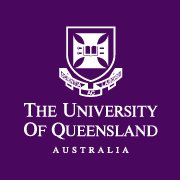Full description
Three reefs were surveyed, with two semi-permanent transects at Flat Rock, two at Shag Rock, and one at Manta Ray Bommie. Each transect was sampled once every survey weekend, with the transect tapes deployed at a depth of 10 m below chart datum. Fish populations were assessed using a visual census along 3 x 20 m transects. Each transect was 5 m wide (2.5 m either side of the transect tape), 5 m high and 20 m in length. Fish families and species were chosen that are commonly targeted by recreational or commercial fishers, or targeted by aquarium collectors, and that were easily identified by their body shape. Rare or otherwise unusual species were also recorded. Target invertebrate populations were assessed using visual census along 3 x 20 m transects. Each transect was 5 m wide (2.5 m either side of the transect tape) and 20 m in length. The diver surveying invertebrates conducted a 'U-shaped' search pattern, covering 2.5 m on either side of the transect tape. Target impacts were assessed using a visual census along the 3 x 20 m transects. Each transect was 5 m wide (2.5 m either side of the transect tape) and 20 m in length. The transect was surveyed via a 'U-shaped' search pattern, covering 2.5 m on either side of the transect tape. Substrate surveys were conducted using the point sampling method, enabling percentage cover of substrate types and benthic organisms to be calculated. The substrate or benthos under the transect line was identified at 0.5m intervals, with a 5m gap between each of the three 20m segments. Categories recorded included various growth forms of hard and soft coral, key species/growth forms of algae, other living organisms (i.e. sponges), recently killed coral, and, non-living substrate types (i.e. bare rock, sand, rubble, silt/clay).Issued: 2015
Data time period: 2014 to 2014
Data time period:
Data collected from: 2014-01-01T00:00:00Z
Data collected to: 2014-01-01T00:00:00Z
User Contributed Tags
Login to tag this record with meaningful keywords to make it easier to discover
Ecological Assessment of the Flora and Fauna of Point Lookout Dive Sites, North Stradbroke Island, Queensland
local : UQ:349503
Roelfsema, Chris, Thurstan, Ruth, Flower, Jason, Beger, Maria, Gallo, Michele, Loder, Jennifer, Kovacs, Eva, Gomez Cabrera, K-Le, Lea, Alexandra, Ortiz, Juan, Brunner, Dunia and Kleine, Diana (2014). Ecological Assessment of the Flora and Fauna of Point Lookout Dive Sites, North Stradbroke Island, Queensland. UniDive PLEA Final Report Brisbane, Australia: UniDive (University of Queensland Underwater Club).
Research Data Collections
local : UQ:289097
School of Geography, Planning and Environmental Management Publications
local : UQ:161208
- DOI : 10.1594/PANGAEA.843122



